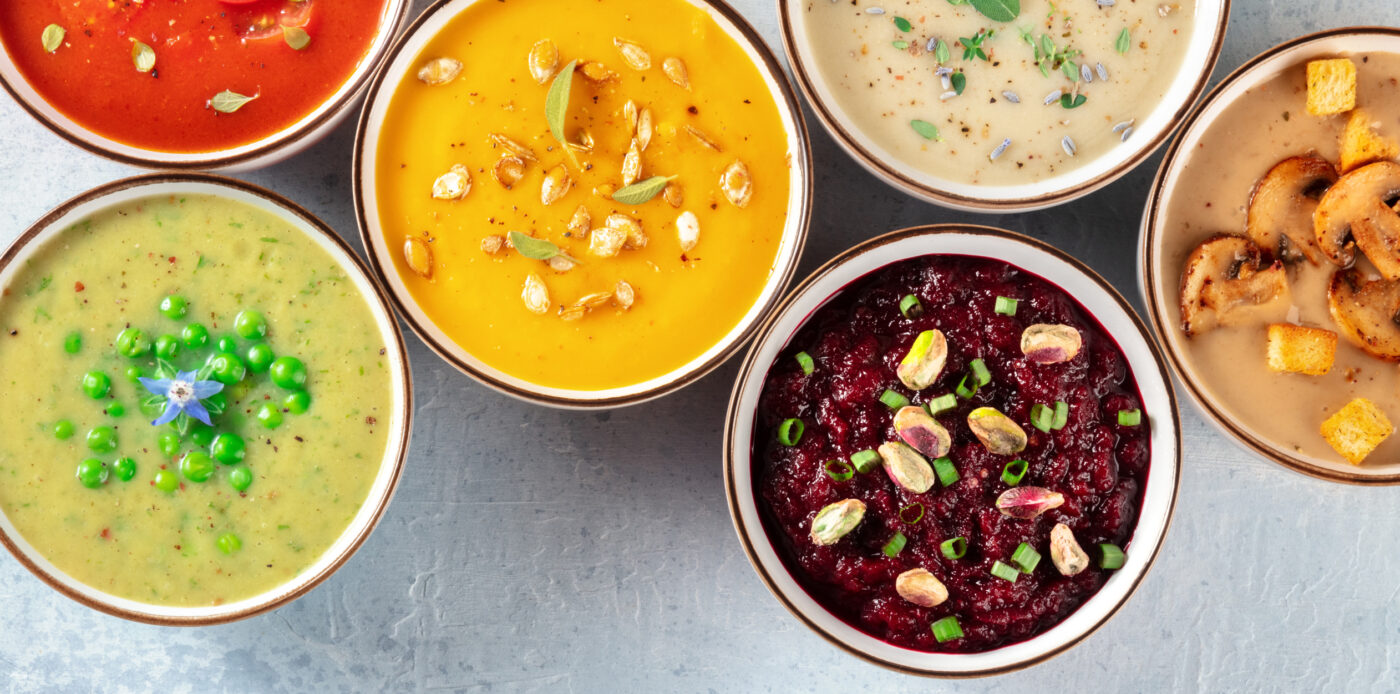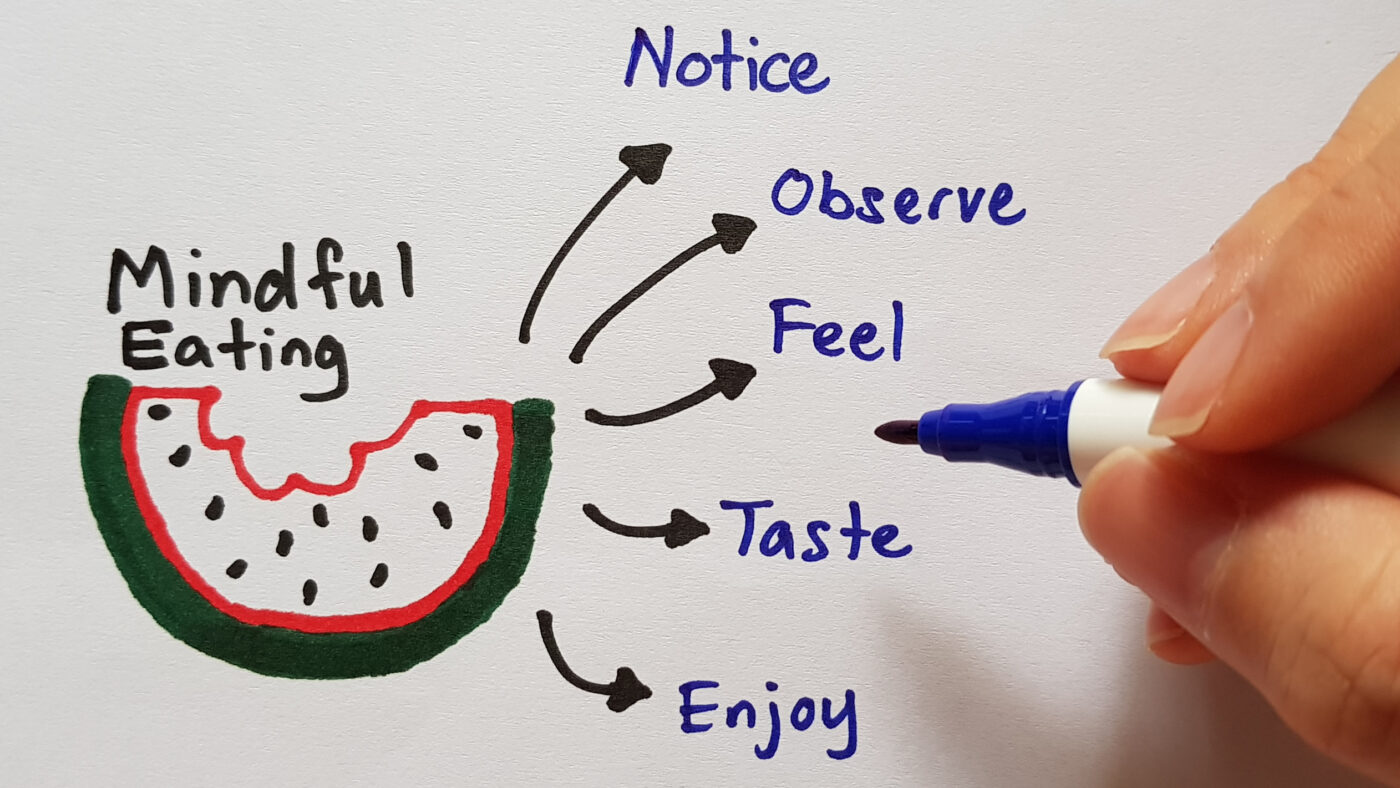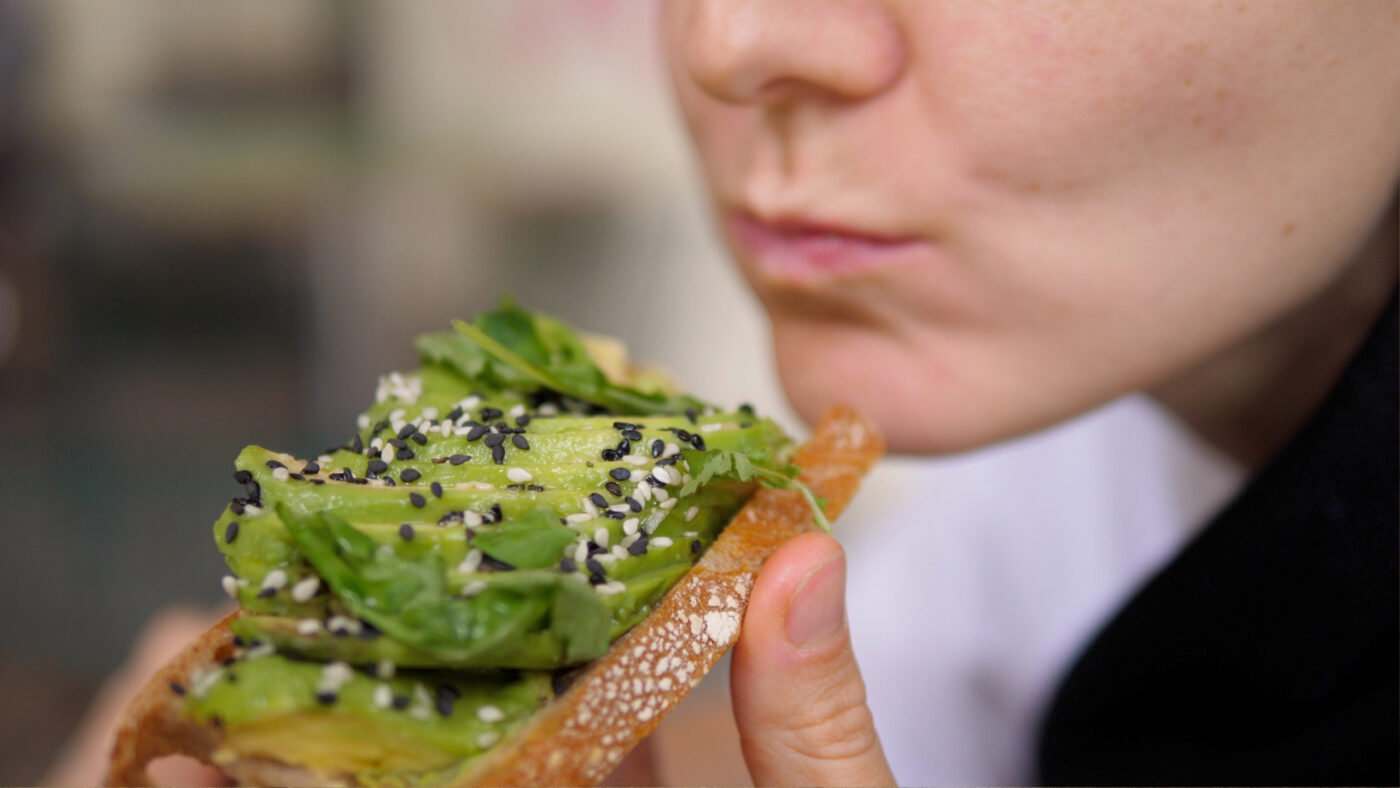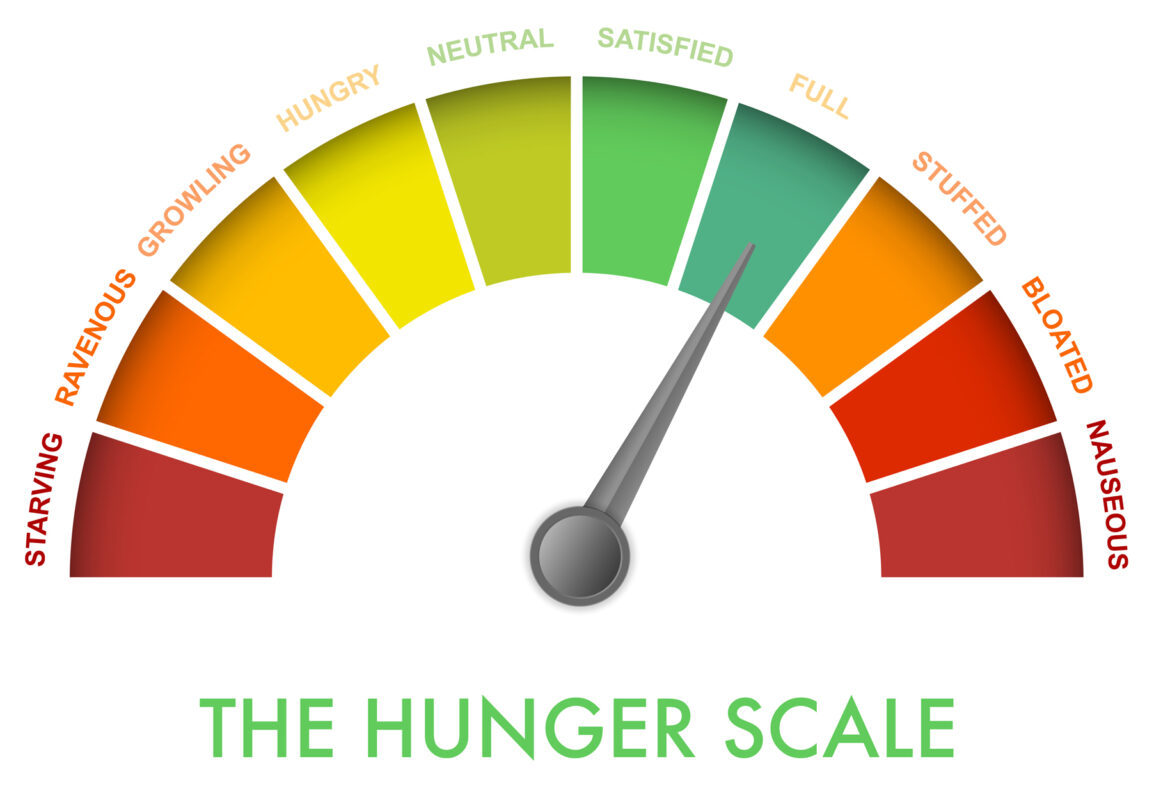What is Mindful Eating
Okay, let’s talk about what mindful eating really is. Well, it’s not some complicated, boring diet plan with a bunch of rules to follow. It’s just about being fully present and enjoying your food. No, seriously! It’s about being in the moment, savoring each bite, and paying attention to how your body feels. Think of it as a way to turn a mealtime into a sensual experience!
You know how diets always seem to focus on rules like what to eat, how much to eat, and what not to eat, all with the goal of reaching specific outcomes like weight loss, decreased cholesterol, or improved blood sugar levels? Well, mindfulness takes a different approach.
Instead of worrying about outcomes, it’s all about being present in the moment and fully enjoying the experience of eating. It’s about paying attention to the food you’re eating, the flavors and sensations you’re experiencing, and how your body feels before, during, and after you eat. And here’s the thing – by focusing on the experience, not the rules, you’ll likely end up eating less, savoring your food more, and choosing foods that are good for you.

Why Should We Bother With Mindful Eating
Why should we bother being mindful while we eat? Well, let’s face it – eating is one of life’s simplest pleasures we all endolge in. But, have you ever found yourself chowing down on a bag of chips while scrolling through social media, only to realize the bag is empty and you don’t remember even tasting the chips? That’s where mindful eating would be helpful.
By being fully present and engaged in our meal, we turn dining into an experience worth savoring. Imagine each bite as a love letter from your taste buds to your brain, telling the story of the flavors and textures of your food. And at the end of the meal, you’ll feel more fulfilled and satisfied, because you took the time to truly enjoy your food.
Mindful eating also helps us make better food choices. Think of it like a trust exercise between you and your body. By paying attention to your body’s signals, you’ll be able to listen to what it truly needs and nourish it with wholesome, nourishing foods. By being mindful while eating, you can reduce mindless snacking on junk food and eliminate feelings of guilt and disappointment.
From a physical standpoint, mindful eating can aid in weight management and improve digestive health. Because when we pay attention to our bodies while we eat, we’re more likely to stop eating when we’re full, rather than overeating and feeling bloated. This pruven to help many maintain a healthy weight and reduce the risk of obesity and related health problems.
Mindful eating can also improve digestive health by reducing symptoms of acid reflux, bloating, and constipation. When we eat mindfully, we chew our food thoroughly and eat at a slow, relaxed pace. This allows our digestive system to work more efficiently, which can help alleviate digestive issues.
From a mental standpoint, mindful eating can reduce stress and anxiety. Eating is often intertwined with our emotions and can be a source of stress, especially when we’re constantly on the go and grabbing food on the run. By taking a few minutes to slow down and focus on our food, we can help reduce stress and anxiety levels, and feel more relaxed and centered.
And here’s the thing, mindful eating can also improve body image and self-esteem. When we pay attention to our bodies and listen to their needs, we’re more likely to have a positive relationship with food and our bodies. This can help improve body image and promote a more positive outlook on life.
In this guide, we’ll take a close look at the practice of mindful eating and explore different strategies and techniques to help you get started. Whether you’re new to mindful eating or you’re looking to take your practice to the next level, this guide has got you covered.

Understanding Mindful Eating
The Science Behind Mindful Eating
Have you ever felt guilty about eating too much, or not knowing when to stop? Well, you’re not alone! Mindful eating can help with that. It’s not a diet, it’s a practice that has been gaining popularity in recent years and with good reason. Scientific research has shown that mindful eating practices can have a positive impact on both our physical and mental health.
Studies have found that practicing mindful eating can help regulate eating behaviors and improve weight management. For example, a study published in the Journal of the Academy of Nutrition and Dietetics showed that individuals who practiced mindful eating lost weight and improved their eating habits. Another study, published in the Journal of Anxiety Disorders, found that mindful eating practices can help reduce symptoms of anxiety and depression.
The science behind mindful eating is rooted in mindfulness and cognitive-behavioral therapy. Mindfulness is the practice of being present in the moment and paying attention to our thoughts, feelings, and sensations without judgment. In the context of eating, this means paying attention to our food, our hunger and fullness signals, and how our body feels while we eat.
Cognitive-behavioral therapy, on the other hand, focuses on changing negative thought patterns and behaviors. In the context of eating, this means changing negative beliefs about food and our bodies and developing a more positive relationship with food. By combining these two approaches, mindful eating can help people regulate their eating habits, reduce symptoms of anxiety and depression, and promote a more positive relationship with food.
So, to reap all the benefits all you have to do is thoroughly enjoy your meal. Isn’t that lovely? Just when you sit down to eat, all you have to do is put your phone away and focus on your food. Pay attention to the flavors, textures, and sensations. Listen to your body’s hunger and fullness signals. And indulge in all the sensory experiences along with all the benefits of this powerful practice!

The Principles of Mindful Eating
Okay, let’s talk about the principles of mindful eating. They’re simple, yet so effective. It’s all about eating with intention, being present in the moment, letting go of judgment, eating slowly, and listening to your body.
Eating with intention means choosing to eat mindfully and with purpose. It’s about taking the time to enjoy your food, rather than just shoving it in your mouth without a second thought.
Paying attention is key. This means being present in the moment and focusing on your food. You want to pay attention to the flavors, sensations, and how your body feels before, during, and after you eat. It’s like turning mealtime into a sensual experience!
Letting go of judgment is a big one. We all have a tendency to criticize ourselves and our eating habits. But with mindful eating, we accept and embrace the experience of eating without judgment or criticism.
Eating slowly is another important principle. This means taking the time to savor each bite and chew your food thoroughly. It’s about relishing each moment and enjoying your food to the fullest.
Finally, we have listening to our bodies. This means paying attention to our hunger and fullness signals and eating in response to our body’s needs. It’s like having a trust exercise with your body, and it’s an essential part of mindful eating.
So, these are the principles of mindful eating. They’re simple, yet so effective. And with a little practice, you’ll be a pro in no time

The Mindful Eating Cycle
Think of the mindful eating cycle like a roadmap for a delicious journey. It’s a simple framework to help you understand the steps of mindful eating and make the most of each meal. Here’s how it goes:
- Preparation – Before you dig in, take a moment to set the scene for a mindful eating experience. Maybe you light some candles, play some music, or set a beautiful table. Whatever it is, take the time to make your eating environment as pleasant and calming as possible.
- Awareness – Once you’re all set, it’s time to focus on your food. Pay attention to the colors, textures, and smells of your meal. Notice the flavors as you savor each bite. And, listen to your body – are you hungry or full? How does each bite make you feel?
- Acceptance – This is where you let go of any judgment and embrace the experience of eating. Don’t worry about whether you’re eating the “right” thing or if you’re eating enough. Just enjoy the moment and let the food nourish your body and soul.
- Nourishment – This is where the magic happens. By focusing on your food and listening to your body, you’ll naturally choose foods that are nourishing and good for you. And, by eating slowly and mindfully, you’ll give your body the time it needs to fully digest and absorb the nutrients from your meal.
- Gratitude – Last but not least, take a moment to express gratitude for the food you’ve eaten and the experience of eating. Whether you say a quick “thank you” or take a moment of silence to reflect, this step is important for closing the mindful eating cycle and creating a sense of fulfilment.
By following these simple steps, you can turn each meal into a nourishing and mindful experience that benefits both your physical and mental health.

Let’s dive into how to prepare for a mindful eating experience that you’ll actually enjoy.
Preparing for Mindful Eating
So, you’re ready to give mindful eating a try? Great! But before you start, it’s important to set yourself up for success by setting an intention, creating a mindful eating environment, and practicing gratitude
Setting an Intention
Think about why you want to try mindful eating. Is it to improve your relationship with food? To feel more relaxed and centered? To better understand your body’s hunger and fullness signals? Whatever your reason, take a moment to write it down or say it out loud. This will help you stay focused and motivated as you begin your mindful eating journey.
Creating a Mindful Eating Environment
Your environment can greatly impact the quality of your eating experience. So, take a few minutes to create a space that’s conducive to mindful eating. This could mean setting the table, lighting candles, or playing relaxing music. You could also consider eating in a quiet, distraction-free space or enjoying your meal outdoors.
Practicing Gratitude
Gratitude is a powerful tool for promoting well-being and happiness. Before you begin eating, take a moment to express gratitude for your food and the experience of eating. This could mean saying grace, or simply taking a moment to reflect on all the things in your life that you’re thankful for. Practicing gratitude can help you approach your meal with a positive attitude and promote a sense of contentment and satisfaction.
And that’s it! By setting an intention, creating a mindful eating environment, and practicing gratitude, you’ll be well on your way to a more mindful and enjoyable eating experience.

Mindful Eating in Action
The Importance of Slowing Down
We’ve all been there. You’re running late for work and you scarfed down your breakfast in two minutes flat. Or maybe you were so focused on finishing your meal that you didn’t even taste it. Sound familiar? That’s where slowing down comes in.
Slowing down while eating is one of the most important aspects of mindful eating. When we eat at a fast pace, we don’t give our brain enough time to process that we’re full. And that can lead to overeating and feelings of discomfort.
So, next time you sit down to eat, try to slow down. Put your fork down between bites, take a sip of water, and savor each bite. Trust me, your taste buds will thank you.
The Five Senses and Mindful Eating
Mindful eating is not just about what we eat, it’s also about how we experience our food. By engaging our five senses – sight, smell, taste, touch, and sound – we can fully immerse ourselves in the experience of eating and deepen our connection with our food.
Paying Attention to Hunger and Fullness
Mindful eating is all about listening to our bodies, and that starts with paying attention to our hunger and fullness signals. By taking the time to tune into these signals, we can learn to eat in response to our body’s needs, rather than simply eating because it’s mealtime or because we’re bored.

Mindful Eating Techniques
Mindful eating is all about being present in the moment and fully engaging with your food. There are a variety of techniques that can help you cultivate a more mindful relationship with food and your body. Here are some of the most popular techniques that you can try:
- Eating in Silence: This technique involves eating without distractions like the TV, phone, or computer. It can help you be more present in the moment and fully engage with your food.
- Eating with Your Non-Dominant Hand: This involves eating with your non-dominant hand. It can help you slow down, be more present in the moment, and pay attention to your food.
- Eating with Chopsticks: Eating with chopsticks can help you slow down and be more mindful while eating. It can also be a fun and unique way to enjoy your food.
- Eating Slowly and Savoring Each Bite: This technique involves taking small, mindful bites of food and savoring each bite before taking the next one. It can help you slow down, be more present in the moment, and pay attention to your food.
- Paying Attention to the Colors, Flavors, and Textures of Your Food: This involves taking the time to fully appreciate the colors, flavors, and textures of your food. It can help you be more present in the moment and fully engage with your food.
- The Raisin Exercise: This classic technique involves taking a raisin and focusing all of your attention on it as you eat it. Pay attention to the texture, flavor, and sensation of the raisin as you eat it. This exercise can help you slow down and be present in the moment while you eat.
- Eating Without Distractions: Turn off the TV, put away your phone and computer and focus on the food in front of you. This technique helps you be more present in the moment and fully engage with your food.
- The Hunger Scale: Use a hunger scale to rate your hunger level before and after eating. It can help you become more aware of your hunger and fullness signals and make more mindful eating choices

So, there you have it, a glimpse into the world of mindful eating in action! It’s not about ticking off a to-do list or following the latest trend, it’s about savoring each moment and finding joy in the simple act of eating. By incorporating these principles and techniques into your daily routine, you’ll be nurturing a healthier and happier relationship with food that will last a lifetime.
When it comes to mindful eating, it’s not just about what we put into our bodies. It’s about the entire experience and how we connect with our food. It’s about taking the time to savor each bite, to pay attention to the flavors and textures, and to listen to our bodies. Mindful eating is about being present in the moment and enjoying the process.
By incorporating these principles and techniques into your routine, you’ll be creating a healthier and happier relationship with food. You’ll find that meals become more than just a way to fuel your body, they become a time to nourish your mind and soul as well. So, go ahead, slow down, and savor each bite. You won’t regret it.

Overcoming Challenges in Mindful Eating
As we moving towards a healthier and happier relationship with food, it’s important to understand that there will be challenges along the way. But, the good news is that with the right tools and mindset, we can overcome these challenges and continue to grow and evolve in our mindful eating practices.
Common Barriers to Mindful Eating
We’re all human, and we all face challenges in our lives. When it comes to mindful eating, some common barriers include stress, emotions, and habits. These barriers can make it difficult to slow down, pay attention, and be present in the moment while we eat.
Strategies for Overcoming Barriers
- Practice mindfulness in other areas of your life: Mindfulness is a skill that can be practiced and developed, so start by incorporating mindfulness into other areas of your life. This will help you build your mindfulness muscle and make it easier to bring mindfulness to your eating experiences.
- Acknowledge your thoughts without judgment: Instead of labeling your thoughts as negative or positive, simply acknowledge them and let them go. Remember, thoughts are just thoughts and they don’t define who you are or your worth.
- Practice self-compassion: Be kind and gentle with yourself. Mindful eating is a process, and there will be ups and downs. When you encounter challenges, remind yourself that it’s okay and that you’re doing your best.
- Focus on the present moment: When eating, try to focus on the present moment and the sensations of eating. This can help you stay present and avoid getting caught up in thoughts and distractions.
- Experiment with different mindful eating techniques: There are many different mindful eating techniques, so experiment with different ones to find what works best for you. Some people may find that certain techniques work better for them than others, so be open to trying different things.
- Celebrate your progress: Mindful eating is a proccess, so it’s important to celebrate it along the way. Take the time to reflect on what you’ve learned and how far you’ve come.
- Seek support when needed: Surround yourself with people who support your efforts to be more mindful and who can offer encouragement and motivation when you need it.
- Practice self-care: Taking care of yourself is an important part of mindful eating. Make time for activities that bring you joy and relaxation, and prioritize self-care in your life. This can help you approach your eating experiences with a more relaxed and mindful mindset.
By incorporating these strategies into your mindful eating process, you’ll be better equipped to overcome barriers and cultivate a more mindful relationship with food and your body.

The Role of Self-Compassion in Mindful Eating
Self-compassion is a key component of mindful eating. It involves treating ourselves with kindness and understanding, rather than judgment and criticism. When we practice self-compassion, we’re more likely to forgive ourselves when we face challenges and setbacks. And that makes it easier for us to keep moving forward and making progress in our mindful eating practices.
The role of self-compassion in mindful eating is about creating a safe and supportive environment for ourselves as we navigate our relationship with food. Instead of beating ourselves up for slipping up or not following our mindful eating plan perfectly, self-compassion allows us to treat ourselves with the same kindness and understanding that we would offer to a friend.
When we approach our eating practices with self-compassion, we’re more likely to be patient and gentle with ourselves. We give ourselves permission to make mistakes and learn from them, rather than dwelling on them. This helps us to maintain a growth mindset, where we’re always looking to improve and grow, rather than feeling defeated by setbacks.
Incorporating self-compassion into our mindful eating practices can also help us to cultivate a more positive relationship with food. When we approach our meals with self-compassion, we’re less likely to feel guilty or ashamed about what we’re eating. We can simply enjoy our food for what it is, without feeling like we’re doing something wrong.
In short, the role of self-compassion in mindful eating is about creating a supportive, non-judgmental environment where we can grow and thrive in our relationship with food. By being kind and compassionate to ourselves, we can overcome challenges, make progress, and ultimately create a healthier, happier relationship with food.

Integrating Mindful Eating into Daily Life
Integrating mindful eating into your daily life is actually quite easy. The point is to make mindful eating a regular part of your lifestyle so that it becomes second nature when you sit down to eat.
Incorporating Mindful Eating into Your Lifestyle
Mindful eating is about being present and intentional with your food. To make this a regular part of your life, try incorporating mindful practices into your daily routine. This could be as simple as taking a few deep breaths before you start eating or spending a few minutes reflecting on your day before you sit down to eat.
Incorporating mindful eating into your daily life can be a fun and enjoyable experience. Here are some tips to get you started:
- Start your day with intention: Before you even sit down to eat, take a moment to set an intention for your meal. This could be as simple as taking a deep breath or taking a moment to reflect on what you’re grateful for.
- Make mealtime a special occasion: Turn mealtime into a special occasion, even if you’re just eating a sandwich at your desk. Light a candle, put on some music, or set the table with your favorite dishes. This can help you to slow down and be more present while you eat.
- Try a new recipe: Experimenting with new recipes can be a fun and delicious way to incorporate mindfulness into your eating routine. Take the time to savor each bite and appreciate the flavors and textures of the food.
- Get creative with your presentation: Presentation is key when it comes to mindful eating. Take the time to plate your food beautifully, and enjoy the colors, textures, and flavors of your meal.
- Focus on the present moment: When you sit down to eat, take a moment to focus on the present moment. Pay attention to your breath, the sounds around you, and the sensations in your body. This can help you to be more present and mindful while you eat.

Special Occasions and Eating Out
Special occasions and eating out can be a fun and exciting time, but it’s also easy to get caught up in the excitement and forget about mindful eating. However, with a little bit of intention and effort, it’s possible to bring mindfulness to these situations too. Here are some tips for practicing mindful eating during special occasions and when eating out:
- Take a moment to appreciate your surroundings: When you arrive at a restaurant or at a special occasion, take a moment to appreciate your surroundings. Take in the sights, sounds, and smells around you. This can help you be more present in the moment and fully enjoy your meal.
- Slow down and savor each bite: When we’re caught up in the excitement of eating out or celebrating, it’s easy to eat quickly and mindlessly. Make an effort to slow down and savor each bite. Pay attention to the flavors and textures of the food, and take the time to enjoy each bite.
- Be mindful of portion sizes: It can be tempting to overeat during special occasions and when eating out, but being mindful of portion sizes can help you avoid overeating and maintain a healthy relationship with food.
- Presence over perfection: Remember, the goal of mindful eating is not to be perfect, but to be present and intentional with your food. No need to stress about sticking to a strict diet or eating plan during special occasions or when eating out. Just do your best to be mindful and enjoy the experience.

By incorporating mindfulness and self-compassion into your relationship with food, you can cultivate a more positive and fulfilling relationship with your body and your meals. It is important to be kind to yourself and celebrate your progress along the way.
Be Alive 🌱
Love ❤️, Julia
References:
Joseph B. Nelson., Mindful Eating: The Art of Presence While You Eat – National Library of Medicine
Daubenmier, J., et al. (2011). Mindfulness practice leads to increases in regional brain gray matter density. Psychiatry Research: Neuroimaging, 191(1), 36-43.
Kristeller, J. L., & Hallett, C. B. (1999). An exploratory study of a meditation-based intervention for binge eating disorder. Journal of Health Psychology, 4(3), 357-363.
Kristeller, J. L., & Hallett, C. B. (1999). An exploratory study of a meditation-based intervention for binge eating disorder. Journal of Health Psychology, 4(3), 357-363.
Van den Berg, P. P., et al. (2015). Mindful eating decreases binge eating and increases emotions of joy, satisfaction, and fullness. Appetite, 91, 109-116.
Williams, J. M. G., et al. (2014). Mindfulness-based cognitive therapy for prevention of recurrence in major depression: A randomized controlled trial. Journal of Consulting and Clinical Psychology, 82(1), 8-17.
Mindful Eating 🥢
GUIDED MEDITATIONS 💗
DISCLAIMER: The materials and the information contained on the Positive Pranic website are provided for general and educational purposes only and do not constitute any legal, medical, or other professional advice on any subject matter. None of the information on our videos is a substitute for a diagnosis and treatment by your health professional. Always seek the advice of your physician or other qualified health providers prior to starting any new diet or treatment and with any questions you may have regarding a medical condition. If you have or suspect that you have a medical problem, promptly contact your health care provider.


























